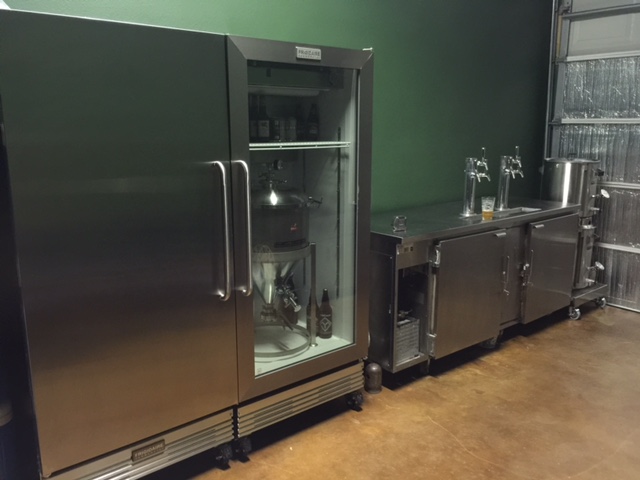Fill up your system with water and run the auto tune. See the PDF link
http://www.mrclab.com/Media/Doc/DTA-4848OPR.pdf looks pretty familiar, eh? There are some differences, but with the manual I was able to find "at". See page 4 of the manual.
To get auto tune "at" to show up on the TOP, press "enter" and relatively quickly release the enter button. If you press too long, you'll get into initial setting function mode (see page 6 of the manual for a good visual), no need to change anything here.
1) Manually heat up the water to reasonable mash temperature set point, I think I did something like 156 deg F. Once the rtd reads 156, I set the manual controller to "00" for a few minutes to make sure everything was reasonably stable.
2) Adjust the TOP set point for what ever the process is running (say152 for example)
3) Move the toggle switch from manual to auto.
4) Change the autotune setting to run, press the enter key. You'll see a green led light up under the text "at" on the lower left of the TOP controller.
The autotune is complete when the green led shuts off. What happens during autotune is the controller does a series of "bump" tests, where it changes the output and looks at the response. Based off the response, it will be able to characterize your system, and calculate p, I, and d for the controller.
After autotune is complete, try changing the set point on the TOP controller. I found the response was much faster with less overshoot. See post 595 for a screenshot of the controllers response. That picture shows post autotune, before auto tuning, the process had pretty significant swings (+\- 10 degrees) when I was using the rims rocket to control the mash temp. Blichmann has the controller set up for "gain" only, p=1, i=0, d=0. That is a very unusual setup from a process control standpoint, I never in my career of loop tuning (I was running bump tests and running all the calculations to determine pid settings...autotune replaced that skill for the most part) had a gain only process. Temperature controllers usually use all three, p, I, and d. You'll see those numbers used after running autotune.
You'll likely need to run autotune with grain to optimize the settings...I haven't auto tuned with grain yet, on some grain bills you'll see a small cycling of the temperature (a degree or two each way)...but the mt thermometer stays exactly at the temperature I want, and gets there in a reasonable time frame. Next time I brew perhaps I'll autotune with grain, not sure why I haven't done that yet, I guess the system has been good enough that I've been able to focus on other process improvements.
Let me know how you make out. I'm guessing that even without the rims rocket, running autotune would be beneficial if you want to improve the controls of the "Krims" setup.
















































![Craft A Brew - Safale S-04 Dry Yeast - Fermentis - English Ale Dry Yeast - For English and American Ales and Hard Apple Ciders - Ingredients for Home Brewing - Beer Making Supplies - [1 Pack]](https://m.media-amazon.com/images/I/41fVGNh6JfL._SL500_.jpg)









